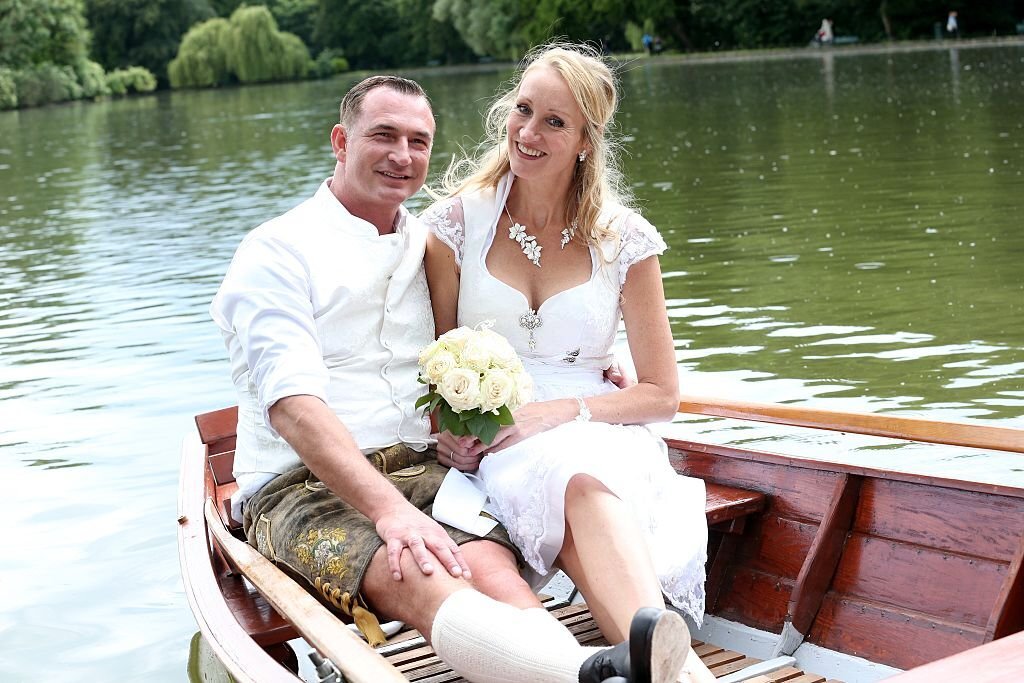Bavaria is a region in Germany with a rich cultural history. Besides that, it is famous for its vibrant cultural clothing and breathtaking landscape. Costume has always been an important ingredient of the cultural recipe. In the same manner, Bavaria also has its famous traditional wear: Lederhosen and Dirndl. Mistakenly, these are only thought to be worn on Oktoberfest. You can also style them on various occasions other than that.
If you have been searching for a guide on when to wear the German Lederhosen, your search is over. You have landed on the right page. In this piece of writing, we will elaborate on the distinct times locals don these authentic lederhosen costumes with pride.
Let’s get started!
What Are Bavarian Traditional Costumes?

Bavaria is home to a rich cultural history. And costumes have always been an important element in the culture of any country and tribe. Traditionally, men have Leather Lederhosen paired with shirts and suspenders. This outfit imparts a unique and real charm that embodies Bavarian authenticity.
On the other hand, women style Dirndls that are comprised of a full-length skirt, blouse, and bodice. It comes in vibrant colors and intricate patterns. A headdress or Alpine hat, along with a laced apron, complete the look.
Besides Oktoberfest, these traditional garments are proudly worn at folk events, religious ceremonies, and weddings. They showcase the deep connection of locals with their rich culture and familial heritage.
Oktoberfest: Largest Beer Festival In The World
Back in 1810, Oktoberfest was celebrated as a one-time celebration at the wedding of the Crown Prince. Later on, the vibe and the essence made it a part of the Bavarian history. With time, it became more and more popular among Bavarians. Every year, culture dwellers from all over the world gather in Munich to enjoy Folk Music, Oktoberfest beer, Traditional Cuisine, Dance, and Parties.
To make the fun unmatched and have an authentic cultural experience, Lederhosen has been associated with the Oktoberfest festival. Undoubtedly, it is the most famous time when people love wearing traditional dresses.
Folk Festival Celebrations

Besides Oktoberfest, Bavaria is home to a plethora of traditional festives. Such events showcase the rich cultural history of the region and offer a good chance to express the familial heritage and identity. They celebrate the vibrant Fasching celebration in February. Moreover, the Kirwa festival holds a special place in the heart. On such occasions, there is an enormous fashion show of Authentic Lederhosen and Dirndls. Undoubtedly, these costumes provoke the cultural history of the region.
All of these occasions serve as a symbol to represent the affiliation that Bavarians have towards their traditions. The intricately designed Drindl and Lederhosen keep the attention hooked. Not only are they elegant, but they also have an element of simplicity in them.
Religious and Cultural Ceremonies
The cultural attire of Bavaria is interwoven with religious tradition. For that reason, locals mostly wear their traditional outfits during their religious ceremonies and events. Germans feel pride in wearing Dirndl and Lederhosen in churches and pilgrimages. Simply put, the Bavarian cultural costume is no less than pride for the locals.
By styling this way, they not only showcase the aesthetic appeal of traditional wear but also the connection between cultural identity and faith. This amazing blend of religious solemnity and tradition looks visually striking and unique.
Traditional Weddings

In Bavaria, people like having weddings that are a blend of traditional and modern-day celebrations. To include the traditional essence, the bride and groom like going for the traditional Bavarian outfits sometimes. For weddings, the bride styles in the one and only Dirndl while the groom incorporates Lederhosen in his look.
No doubt, this inclusion of traditional outfits declares the connection and appreciation of the couple towards their culture. This way, the wedding becomes more vibrant and imparts the vibes like a cultural festival. And makes the wedding experience far more than just a wedding.
Regional Parades And Celebrations
Bavaria is a region in Germany that is known widely for its sense of community. To have fun together and celebrate the shared identity, locals as well as visitors march together. Bavarians wear Lederhosen and Dirndl as a symbol of pride in their roots and a symbol of unity. Besides the regional parades and celebrations, they choose the same outfits for the commemoration of historical events, a village parade, and the harvest festival.
Such gatherings represent the traditional wear diversity of Bavaria. You can choose your outfit in the color, style, length, and embroidery design you want. All these attributes contribute to the regional nuances.
Local Music And Dance Parties
The trend of folk music and dance parties is quite old. So, these events set a stage for locals to have unmatched fun and make everlasting memories. Also, it gives them a chance to showcase Bavarian cultural pride. To fully immerse in the festive, Bavarians choose traditional wear, whether it is a music gathering or a folk dance performance.
As an interesting matter of fact, the stomp of Lederhosen-clad feet and the twirl of Dirndls result in creating a mesmerizing display of Bavarian identity. Besides entertaining, these events contribute to the preservation and transfer of Bavarian culture. Each step in Lederhosen and every spin of Dirndl has a story to tell that only culture explorers can witness.
Final Verdict
Besides the beer tents at Oktoberfest, Bavarians wear their traditional dresses on various occasions. These occasions may have cultural, familial, or religious significance for Bavarians. Besides the folk festivals, they also style them for traditional weddings, regional parades, and folk music fests. Such events highlight the connection that Bavarians have with their culture.
With the expansion of Bavarian culture, Lederhosen and Dirndl have evolved into timeless pieces of garment. They have stood the test of time and are now renowned all over the world.
